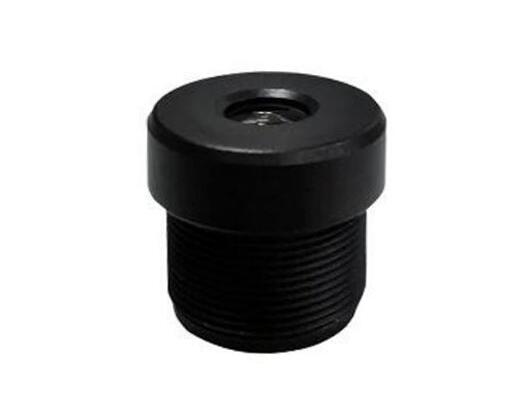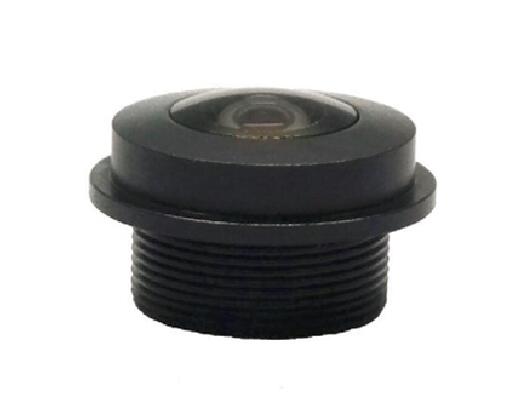Advancements in Automotive Lens Technology
The Role of Automotive Lenses in Autonomous Driving
Automotive lens play a vital role in autonomous driving. They act as the vision for self-driving cars. These lenses allow Advanced Driver Assistance Systems (ADAS) to understand the surroundings with accuracy. This ensures safe navigation and smart choices. They are built to take clear pictures and videos. Complex programs then use this data to spot obstacles, road signs, and lane lines. The progress in automotive lens technology has greatly boosted autonomous driving systems. It has made them more precise and dependable.
Material Innovations in Automotive Lens
Material improvements have led the way in automotive lens growth. Old-fashioned glass lenses are giving way to newer options. These newer materials have better optical qualities and strength. Examples include polycarbonate and other tough plastics. They are light but strong. They resist scratches and bumps well. Such changes increase the lifespan of automotive lenses. They also improve how well the lenses work in different weather. The use of these materials lets companies make lenses that handle extreme heat, cold, or tough conditions. This is key for keeping them working at their best.
Non-Spherical Lens Elements for Enhanced Imaging
The use of non-spherical lens elements, also called aspherical lenses, is a big step forward. These lenses cut down on spherical distortions. They sharpen images by directing light more accurately onto the sensor. Aspherical lenses allow for smaller designs without losing quality. This makes them perfect for today’s cars, where space is tight. They reduce warping and offer clearer pictures. This boosts the power of cameras in ADAS. As a result, driving becomes safer.
Enhancements in Automotive Lens Functionality
Self-Cleaning and Anti-Fogging Technologies
Automotive board lens now come with self-cleaning and anti-fogging features. These keep the view clear in all situations. Self-cleaning layers push away water, dust, and dirt. This keeps the lens clean without needing hands-on care. Anti-fogging coatings stop moisture from building up on the lens. This is especially helpful in wet or fast-changing weather. These tools are critical for keeping cameras clear. Systems like lane-keeping assist and collision prevention depend on them.
High-Resolution Cameras and Their Impact on ADAS
High-resolution cameras are now key parts of modern ADAS. They provide sharp, detailed pictures. This improves how the system works. With more pixels, these cameras pick up extra details about what’s around the car. They help spot objects and dangers more precisely. This supports features like pedestrian sensing, adaptive cruise control, and auto-parking. Better camera resolution speeds up reaction times. It also strengthens safety steps. The ongoing rise in camera clarity directly lifts ADAS performance.
Future Trends in Automotive Lens Development
Integration with LiDAR and Other Sensor Technologies
The future of automotive lens progress will tie closely to LiDAR and other sensors. As self-driving cars advance, the need for full sensing power grows. Automotive lenses will be central in boosting LiDAR systems. LiDAR is vital for making detailed 3D maps of a car’s surroundings. Lenses work alongside sensors to sharpen the data collected. This leads to smarter choices in autonomous driving setups.
Also, as cars get smarter and more linked, combining different sensors will be a must. This ensures smooth operation. Automotive lenses will need to keep up with these changes. They must offer better optical results and work well with many sensors. This trend will likely spark more breakthroughs in lens design and materials. Companies will create lenses that meet the needs of tomorrow’s car tech.
Emerging Applications of Automotive Lens
The uses for automotive lenses are growing beyond their usual roles. This opens new doors for creativity. With smart cities and connected systems on the rise, automotive lenses are helping in vehicle-to-everything (V2X) setups. These setups need top-notch imaging to share real-time info between cars and their surroundings. This boosts road safety and flow.
Plus, automotive lenses are starting to appear in augmented reality (AR) displays inside cars. AR systems show important info on the windshield or dashboard. This keeps drivers aware without looking away from the road. Such uses demand advanced lens tech. The lenses must give clear, true visuals in all kinds of light.
Conclusion: The Path Forward for Automotive Lens
Continued Innovation in Material Science and Design
The future of automotive lens growth depends on ongoing creativity in materials and design. As noted earlier, material advances have led this field. Progress in options like polycarbonate and strong plastics will remain key. These materials improve lens toughness and performance. They offer great optical traits while staying light and sturdy. This makes them ideal for today’s car needs.
Also, better design methods will help companies craft smaller, more effective lens systems. Tools like computer-aided design (CAD) and simulation programs allow exact shaping of lens parts. This leads to designs that boost optical power while cutting size and weight.
Meeting the Demands of Future Automotive Technologies
As car tech moves forward, lenses must adapt to new challenges. The growing complexity of self-driving systems demands lenses that deliver crisp images with little distortion. This must hold true in all kinds of conditions. Ongoing studies into new materials and making methods are vital. These efforts will produce top-notch optical parts.
What’s more, as cars tie into smart setups, lenses will need to fit into linked systems. This includes working with new V2X communication rules. They must also adjust to different real-world driving scenes.
In closing, AICO Electronics Limited is dedicated to pushing automotive lens tech forward. We focus on research and development. Our goal is to meet these changing needs. By using the latest production methods and creative material fixes, we aim to offer top-quality products. These are built for the future of travel.
Frequently Asked Questions
How do automotive lenses integrate with LiDAR technology?
Automotive lenses boost LiDAR systems. They improve optical performance. This helps create detailed 3D maps needed for self-driving cars.
What are some emerging applications for automotive lenses?
Beyond old uses, automotive lenses now aid V2X communication systems. They also help with augmented reality displays in cars.
Why is continued innovation important for automotive lens development?
Innovation keeps lenses tough yet light. It ensures they have the optical traits needed for modern uses.
How does AICO Electronics Limited contribute to advancing this field?
AICO Electronics Limited drives progress with research. We aim to deliver high-quality products tailored for future transport needs.
For more details or questions about customization services from Hangzhou Ai Ke Electronics Co., Ltd., please reach out to us. You can also visit our website.

